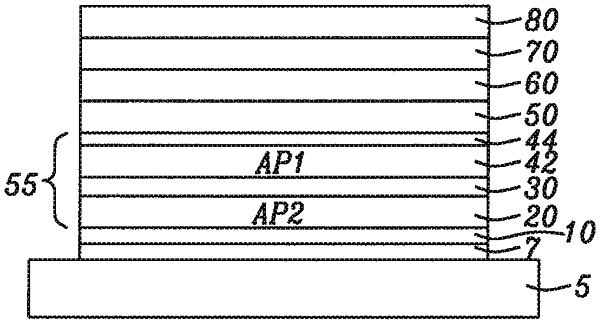| CPC H10B 61/00 (2023.02) [H10N 50/01 (2023.02); H10N 50/10 (2023.02); H10N 50/80 (2023.02); H10N 50/85 (2023.02)] | 20 Claims |

|
1. A method comprising:
providing a substrate;
forming a seed layer on the substrate;
forming a second pinned layer on the seed layer at an ambient temperature;
forming a first portion of a first pinned layer on the second pinned layer at the ambient temperature to form a material stack;
after the forming of the first portion of the first pinned layer, cooling the material stack, wherein the cooling includes applying a first predetermined temperature that is lower than the ambient temperature to the material stack;
forming a second portion of the first pinned layer on the first portion of the first pinned layer, wherein forming of the second portion of the first pinned layer on the first portion of the first pinned layer occurs without maintaining the first predetermined temperature; and
forming a ferromagnetic free layer over the second portion of the first pinned layer, wherein the forming of the ferromagnetic free layer includes:
forming a first ferromagnetic free layer over the second portion of the first pinned layer without cooling the first ferromagnetic free layer during the forming of the first ferromagnetic free layer, the first ferromagnetic free layer formed of a first material;
cooling the first ferromagnetic free layer by applying a second predetermined temperature to the first ferromagnetic free; and
forming a second ferromagnetic free layer on the first ferromagnetic free layer without maintaining the first ferromagnetic free layer at the second predetermined temperature.
|